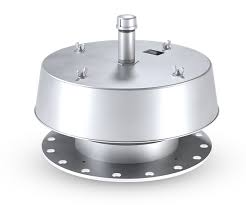All manufacturers, whether running small production businesses or having a large manufacturing company, will agree with me that production planning and scheduling is one of the most challenging yet important tasks in manufacturing. Running a factory 24/7, placing workers according to their skills, keeping track of inventory, and meeting deadlines requires perfect planning. Only proper planning and execution of all these activities will lead businesses towards customer satisfaction.
We are in 2025, and we have apps and software for almost everything, be it grocery, food delivery, shopping, or corporate needs like employee and payroll management. Then why not for production planning and scheduling? Yes, now many manufacturers are rapidly accepting production Planning software.
Production planning software is specially designed to help small, medium, and large manufacturing businesses to automate their production planning, scheduling, and management. So that manufacturers can keep track of every activity and provide quality to their customers.
There are many in-built software solutions available for production planning and scheduling, but most businesses choose to build custom software. This software allows them to customize according to their unique needs, which is difficult with pre-built production planning software.
So, if you are a manufacturer facing different problems in streamlining the production process and looking for an affordable advanced solution like production planning software, this guide is for you. Here, we will discuss what production planning software is, how it works, its features and benefits, and how you can buy one such software for your business.
What is Production Planning Software?
Production planning software is a computer program that will help in planning, scheduling, and managing the production process so that manufacturers can make complete use of resources. It also helps manufacturers to improve their resources, manage their inventory, reduce waste, and deliver products on time. In this way, with such algorithms and working in real-time, production planning software helps manufacturing companies match their schedules according to demand predictions, available material, and workforce capacity. It helps make operations smoother, reduce production costs, and increase overall productivity.
The global market for production planning software is expected to grow a lot in the next few years. According to a report by Grand View Research, the market size in 2020 was around USD 7.1 billion and is expected to grow at an estimated rate of 8.1% from 2021 to 2028. It is evident that in today’s industries, production planning is considered one of the integral aspects of their business operations since more companies take advantage of resource management and workflow improvement.
Use cases Of Production Planning Software
1. Real-Time Tracking
Use Case: There is real-time tracking of raw materials, work in progress and finished goods.
Benefit: The proper level of stock is preserved; no shortage or surplus stock and minimum cost of warehousing.
2. Material Requirement Planning (MRP)
Use Case: This software automates material requirements, and procurements are then scheduled based on production schedules and demand forecasts.
Benefit: Materials are available when required; thus, there are no delays or inventory holding costs.
3. Production Monitoring and Tracking
Use Case: It monitors the production in real time to find the bottlenecks, delays or problems in the production.
Benefit: It gives actionable insights that allow for quick adjustments to maintain the flow of production and meet deadlines.
Features of Production Planning Software
Production planning software provides many features that streamline manufacturing processes, improve resource management, and enhance overall productivity. These tools are designed to address the specific needs of manufacturers, helping them automate tasks, optimize schedules, and reduce inefficiencies. Below are the key features of production planning software:
Inventory Management
It tracks raw materials, work-in-progress, and finished goods at all times. The inventory management is automated and helps the companies maintain the stock levels to its optimal range while reducing the amount of waste that is generated in the process, thus avoiding delay in production.
Advanced Analytics
Advanced analytics help provide insights on the performance of production, efficiency, and scope for improvement. This helps the businesses identify trends, monitor KPIs, and take data-driven decisions to optimize their operations and productivity.
Automated Reporting
Automated reporting will generate production reports, which saves a lot of manual input. It tracks the key metrics, performance, and usage of resources that will be beneficial for managers to make decisions based on such information. If your reporting needs are unique, you may hire software developers to create a customized production planning solution.
Order Management Integration
Order management integration links production planning software with order systems, aligning production schedules with actual customer demand. This helps ensure that production meets the expectations of the customers and facilitates better planning of inventory and materials.
Production Monitoring
Production monitoring tracks real-time progress, identifying bottlenecks, delays, or quality issues as they occur. This allows manufacturers to respond promptly, thus minimizing disruptions and keeping the production on track.
Scalability
The use of scalable production allows for growth and adjustment in terms of operations without investing in new systems. Production planning software enables changes in business needs, both in small and large-scale productions.
Customization Capabilities
Customization Enables manufacturers to make the software work within their unique processes and needs. This includes adjusting workflows, creating custom reports, or modifying interfaces to ensure that the software works efficiently within specific business requirements.
Benefits of Production Planning Software
Production planning software provides numerous benefits that can significantly enhance manufacturing operations. Automating and streamlining various processes, these tools help improve productivity, reduce costs, and ensure timely delivery. Below are the key benefits of using production planning software:
Introduces automation in recurrent activities or transactions and optimizes its workflows, allowing human resources to engage in more strategic transactions, thus enhancing efficiency.
- Improves manufacturers’ ability to maintain optimal levels of inventory, reducing unnecessary stock, waste, or warehousing costs.
- Optimizes usage of labor, machinery, and materials to enhance productivity.
- All resources are allocated efficiently so that idle time is minimized and maximum output is extracted from available assets.
- Improves decision-making with real-time insights and performance data.
- Actionable data and reports enable managers to make informed decisions and identify areas for improvement.
- On-time delivery and customer satisfaction are enhanced because production is smooth and delays are minimized.
- Identifies potential problems upfront and permits changes to stay on schedule with product deliveries, which is a very timely production system.
So, this is everything about production planning software and how this can help your manufacturing business with its advanced features. You can make this software more powerful by integrating advanced technologies like AI, ML, and NLP. This might not be possible with prebuilt software available in the market. So you can build one for your own business, the following guide will help you to get your customized production planning and scheduling software.
Steps To Build A Production Planning And Scheduling Software
1. Identify Business Needs
Identify some of the major challenges in your current process, such as inefficient scheduling, issues related to resource allocation, or management of inventory. Consult with key managers, workers, and inventory staff to list the goals of the software.
2. Define Essential Features
Identify critical features, which may comprise real-time scheduling, inventory control, resource optimization, or even production follow-up. Take an area that may have a strong hold on some production pain spots that are likely to drive efficiency further.
3. Identify Appropriate Technology and Tools
Based on your needs, decide if you’ll use off-the-shelf software or opt for a custom solution. Work with a software development company to select the right technology that will best fit your business size and growth plans, ensuring the system can scale as your production needs grow.
4. Implementation and Staff Training
Work with developers or software providers to implement the system. Start with a pilot phase in one production line or department. Train your staff to use the new system efficiently and ensure everyone understands how it will benefit their day-to-day tasks.
5. Monitor and Optimize
After deployment, follow up on the system’s performance and ensure that any feedback from the staff is incorporated into adjustments. Periodically update the system for new features, functionality improvements, and sustaining updates to keep up with your growing business needs over time.
Thus production planning software transforms the manufacturing industry. It helps you automate important aspects such as material planning, production tracking, and inventory management to optimize resource allocation, minimize cost, and improve the timeliness of deliveries. Customized, the software can solve challenges and bring better operational efficiency for you.
Production planning software enables your manufacturing business to be future-proof with advanced technologies such as artificial intelligence, machine learning, and real-time analytics. Implementing the right solution tailored to business needs will make processes smoother than ever while positioning your company for sustained growth and success within an increasingly competitive market.




